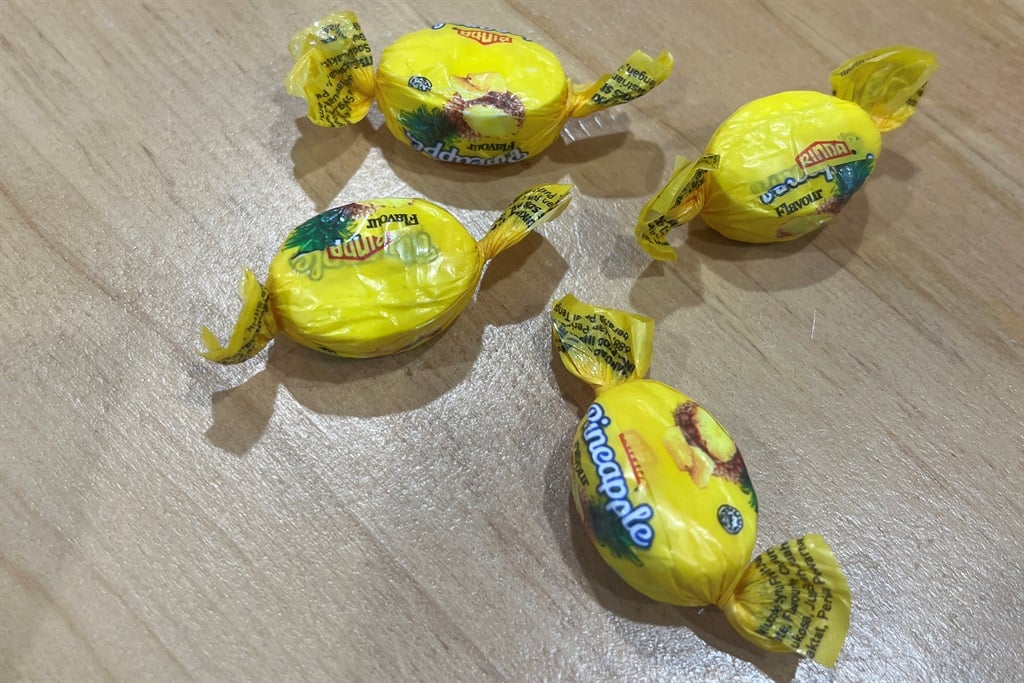This handout, taken on 13 August 2024 and released on 14 August by the New Zealand Police, shows pineapple sweets laced with potentially lethal amounts of methamphetamine (tik) in Auckland. Food parcels dished out by a New Zealand charity unknowingly contained a batch of sweets contaminated with the highly addictive illegal drug, police said. (Handout / NEW ZEALAND POLICE / AFP)
- Pineapple sweets distributed by a New Zealand charity
were found to contain dangerous levels of methamphetamine (tik), leading to the
hospitalisation of a child, a teenager, and a charity worker. - Authorities are conducting a criminal investigation to
track down and retrieve potentially hundreds of affected sweets, with 16
already found. - Eight families have been affected so far, and health
officials are warning the public against consuming any sweets received from the
charity.
Pineapple sweets dished out by a New Zealand charity have
tested positive for potentially lethal amounts of methamphetamine (tik), police
said Wednesday, sparking an urgent race to remove them from the streets.
A child, a teenager and a charity worker have already been
taken to hospital after they tasted the candies.
Although none are seriously ill, police have launched a
criminal investigation and are now trying to track down up to 400 other people
who may have received the sweets.
“We need to round these up as quickly as we can,”
said Detective Inspector Glenn Baldwin, adding that 16 of the sweets had been
found so far.
Police suggested the drugs might have been packaged under
the “Rinda” brand by traffickers or dealers to evade detection.
They are then believed to have been donated to anti-poverty
charity the Auckland City Mission, which inadvertently distributed them via a
food bank.
Baldwin said:
Drug importation is complex, and organised criminal groups use a range of measures and techniques to try and evade enforcement agencies, not only in New Zealand, but around the world.
A child and a teenager were taken to hospital after tasting
the sweets and spitting them out. Both are okay, Baldwin added.
A charity worker was also treated for symptoms consistent
with methamphetamine, but later discharged.
The New Zealand Drug Foundation said a test sample of an
innocuous-looking piece of white candy in a bright yellow wrapper indicated it
contained methamphetamine.
Foundation spokesperson Sarah Helm said the tested sweet
contained approximately three grams of meth — hundreds of times greater than
the common dose taken by users.
Helm said:
Swallowing that much methamphetamine is extremely dangerous and could result in death.
Helm urged people who had received confectionaries from the
Auckland charity not to consume them.
“We don’t know how widespread it is.”
Eight families so far affected
The Auckland City Mission’s Helen Robinson said the
organisation was “devastated” by the news.
Her organisation believes as many as 400 people could have
received the affected sweets in a food package.
She said eight separate families had been affected so far,
including one instance where a parent gave one of the candies to her child, who
immediately spat it out.
Robinson said she had been told the potent contaminated
sweets tasted “acrid and revolting”.
She warned:
You could have only a very small touch or lick of the substance and still be deeply affected.
A contaminated sweet was taken for testing when a person
felt strange after starting to eat it and noticed a bitter taste.
Methamphetamine can cause chest pain, racing heart,
seizures, delirium and loss of consciousness, the drug foundation warned.
Helm told Radio New Zealand it is common for drug smugglers
to hide illegal narcotics in food form.
“We suspect somebody hasn’t intentionally sought to
poison children,” she said.





















Discussion about this post